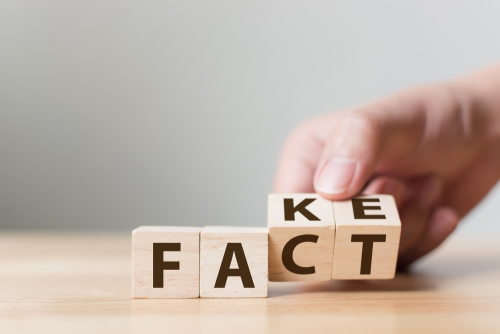Information literacy skills top many lists of must-have abilities, especially in the age of fake news. Not all results in a Google search are legitimate–but how many of today’s students know this?
Children have access to devices at younger ages, which underscores the importance of teaching them how to look at news with a critical eye and to evaluate the information’s origin. Because today’s students are growing up in an age where information is easily accessed, they need to know how to apply critical evaluation skills when met with information purporting to be truthful.
A 2017 Stanford University study determined that students from middle school through college were not able to distinguish between reliable news sources and sponsored content or advertising.
“In every case and at every level, we were taken aback by students’ lack of preparation,” the study’s authors write. “Never have we had so much information at our fingertips. Whether this bounty will make us smarter and better informed or more ignorant and narrow-minded will depend on our awareness of this problem and our educational response to it.”
During the 2016 presidential election, fake news stories were more popular than legitimate media reports.
A BuzzFeed analysis found that in the last three months of the U.S. presidential campaign, the most-viewed fake election news stories on Facebook elicited more reader engagement than legitimate top stories from sources such as the Washington Post, the New York Times, and NBC News. In all, top-performing fake news stories received roughly 1.3 million more shares, reactions, and comments than did the legitimate top-performing news stories.
Here are some resources to help teachers and students navigate media and information literacy:
1. In Media Literacy: Where News Comes From, the American Press Institute explores how students can determine if news is reliable. They also participate in a mock press conference to experience the process and challenges of effectively communicating and disseminating information.
2. The National Association for Media Literacy Education offers resources, lesson plans, and member-submitted ideas to teach students about information literacy and how to critically evaluate news.
3. Common Sense Education’s News and Media Literacy is an educator toolkit, grouped by grade, to help teachers show students just how important critical thinking and evaluation skills are for today’s world.
4. PolitiFact, a nonpartisan, Pulitzer Prize-winning website, fact-checks news reports and aims for transparency, fairness, and thorough reporting. It also offers a section that exposes fake news and false claims reported in the media.
5. The CRAAP Test continues to be an educator favorite. It was developed by university librarians and focuses on currency, relevance, authority or source, accuracy, and purpose of a piece of information.
- 4 ways to support work-based learning - April 23, 2024
- Prioritizing inclusivity in game-based learning - April 22, 2024
- Friday 5: Universal Design for Learning - April 19, 2024

